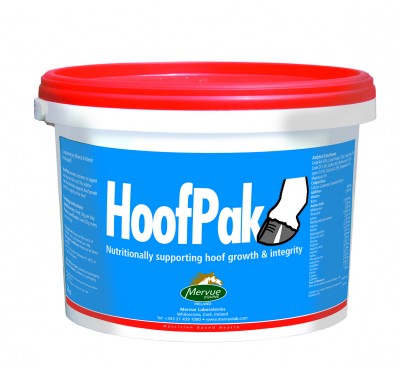- +353 21 422 0397
- info@mervue.ie
- Mon - Fri: 09:00 - 17:00
It has been well established that malnourishment negatively impacts equine hoof wall quality and that hoof wall quality varies with age and season. The hoof wall is composed of approximately 90% protein. Keratin is the predominant component of the hoof wall and gives the hoof wall its hardness, cysteine is an amino acid which is predominantly found in the link that connects the keratin tubules to one another. Keratinisation refers to the process by which the soft cells at the coronary band are replaced with keratin to form the hard hoof wall. Nutrients required for normal keratinisation and good hoof horn quality are amino acids, especially sulphur-containing amino acids such as cysteine or methionine. The strength of the hoof has also been demonstrated to be positively associated with the sulphur content of the hoof. Biotin is a vitamin of crucial significance in the development of the horny tissue and positively affects its compactness and integrity. Minerals and especially trace elements, zinc and copper and vitamins like biotin are important for the normal keratinisation of the hoof wall. Unfortunately, a significant number of ponies experience laminitis during their life and these animals may benefit from supplementation with HOOF PAK.
RECOMMENDATION: HOOF PAK
 HOOF PAK powder contains a range of amino acids and particularly the amino acids that are high in sulphur; cysteine and methionine. The MSM in HOOF PAK has a protective effect against oxidative stress in the horse’s tissues and is also a sulphur donor and is used to produce cysteine and methionine. Biotin in HOOF PAK is included to support the production of good quality hoof. The trace minerals zinc and copper have been shown to positively impact hoof growth and are included in HOOF PAK as MACC chelates. The zinc and copper are bound to glycine which protects the minerals from damage in the acid stomach environment and promotes their absorption in the small intestine. Considering that hoof wall growth is relatively slow it may take a minimum of six weeks to begin to appreciate any changes in hoof horn quality at the coronary band and similarly, it may require supplementation for periods more than a year for the hoof horn to completely grow from the coronary band to the ground.
HOOF PAK powder contains a range of amino acids and particularly the amino acids that are high in sulphur; cysteine and methionine. The MSM in HOOF PAK has a protective effect against oxidative stress in the horse’s tissues and is also a sulphur donor and is used to produce cysteine and methionine. Biotin in HOOF PAK is included to support the production of good quality hoof. The trace minerals zinc and copper have been shown to positively impact hoof growth and are included in HOOF PAK as MACC chelates. The zinc and copper are bound to glycine which protects the minerals from damage in the acid stomach environment and promotes their absorption in the small intestine. Considering that hoof wall growth is relatively slow it may take a minimum of six weeks to begin to appreciate any changes in hoof horn quality at the coronary band and similarly, it may require supplementation for periods more than a year for the hoof horn to completely grow from the coronary band to the ground.
Copyright © 2019 Mervue Laboratories. All Rights Reserved.